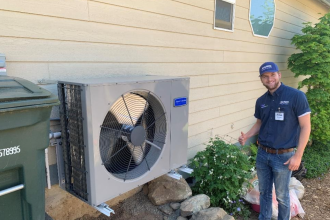Having a clean, organised, clutter-free wardrobe is the ultimate dream for most parents. However, this wish rarely survives your children’s seeming preference to be as messy as possible. This clash hampers the benefits of an organised wardrobe. Therefore, a few tips and tricks on maintaining a well-arranged children’s room can go a long way.
As you try to implement better room cleanliness, you can begin by organising your child’s wardrobe with these 10 easy steps:
CONSIDER THE WARDROBE DESIGN
A wardrobe’s design determines how much you can fit into it. There are numerous closet types, including:
- Sliding door wardrobes are ideal for children’s rooms. They are not only easy to open and close but also save space.
- Mirror wardrobes make roomsseem larger. Moreover, the mirrors allow children to see the results of their outfit selection efforts.
- Hinged wardrobes work best in large rooms and make arranging a child’s room easy.
- Custom wardrobes allow you to create exactly the type of storage space you need. However, it is best to implement sections in the closet design for kids’ rooms to allow more manageable arrangement.
CLEAN OUT THE WARDROBE
Before you begin arranging, it is best to remove everything. This process lets youknow what is in your child’s wardrobe and where best to put it.
After everything is out, note how and where you will place all necessary items while removing the unnecessary ones and keeping them out.
SORT OUT ALL THE ITEMS
Next, with everything out of the wardrobe, begin sorting them out in separate piles. Make this process easier by labelling numerous boxes or different spots on the floor on which you will group the items.
The most basic typical grouping uses keep, donate and discard piles. However, if you prefer more detail, you can use:
- Every day wear
- Oversize.
- School uniform.
- Donation pile.
- Discard pile.
If your child is with you as you organise, involve them in the process while educating them about the benefits of decluttering and the importance of letting go of/donating things.
ARRANGE WITHIN THE CHILD’S LEVEL
Ensure all drawers, hanging bars, and shelves are within your child’s vertical reach. This consideration makes it simpler for them to pick up and return their clothes. In addition, you can adjust the shelf heights as your child grows taller.
STORE SIMILAR ITEMS TOGETHER
Fold and place similar items together. So, for example, shorts, trousersand skirts may go on one shelf, while blouses and T-shirts on another. Use adjustable hangers to hang shirts, dresses and jackets.
USE STICKERS/MARKINGS WHERE NECESSARY
Create stickers to clearly label what each shelf is for, thus enabling your child to better keep to the arrangement.
PRIORITISE EVERYDAY CLOTHING
Everyday wear like school uniforms and pyjamas should be easiest to reach. So, arranging them on the lowest shelves or drawers is best.
USE CONTAINERS/BINS
Organise small items like underwear, socks, toys and school supplies in welllabelled open containers. Additionally, it is best to teach your children how to put their things away in the proper containers.
ORGANISE SHOES
Having a separate shoe storage area allows you to avoid the headache of dealing with ever-disappearing shoes.
MAINTAIN THE WARDROBE ARRANGEMENT
You may have to create a few rules to help your children maintain the order you attain. For example, you can place a laundry hamper in the corner of the room and insist that your kids put all dirty clothes there rather than throwing them on the floor.
After your initial arrangement push, it is best to maintain the order you create by returning every few weeks to ensure everything remains in place.
Hopefully, the above suggestions will help you make sense of your child’s disaster of a room. In addition, these ideas show you how to maximise your wardrobe space to create an orderly clutter-free space that will allow your children to enjoy their space while inspiring them to learn how to be cleaner, more organised adults.














